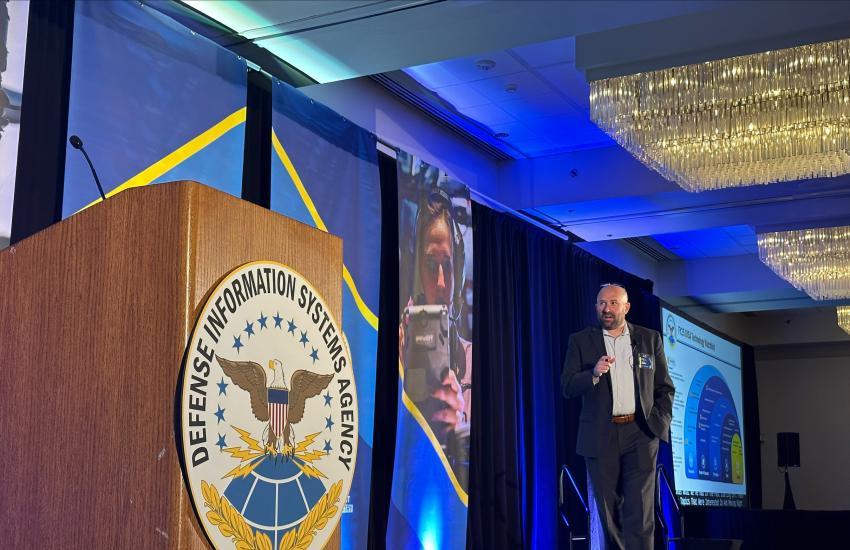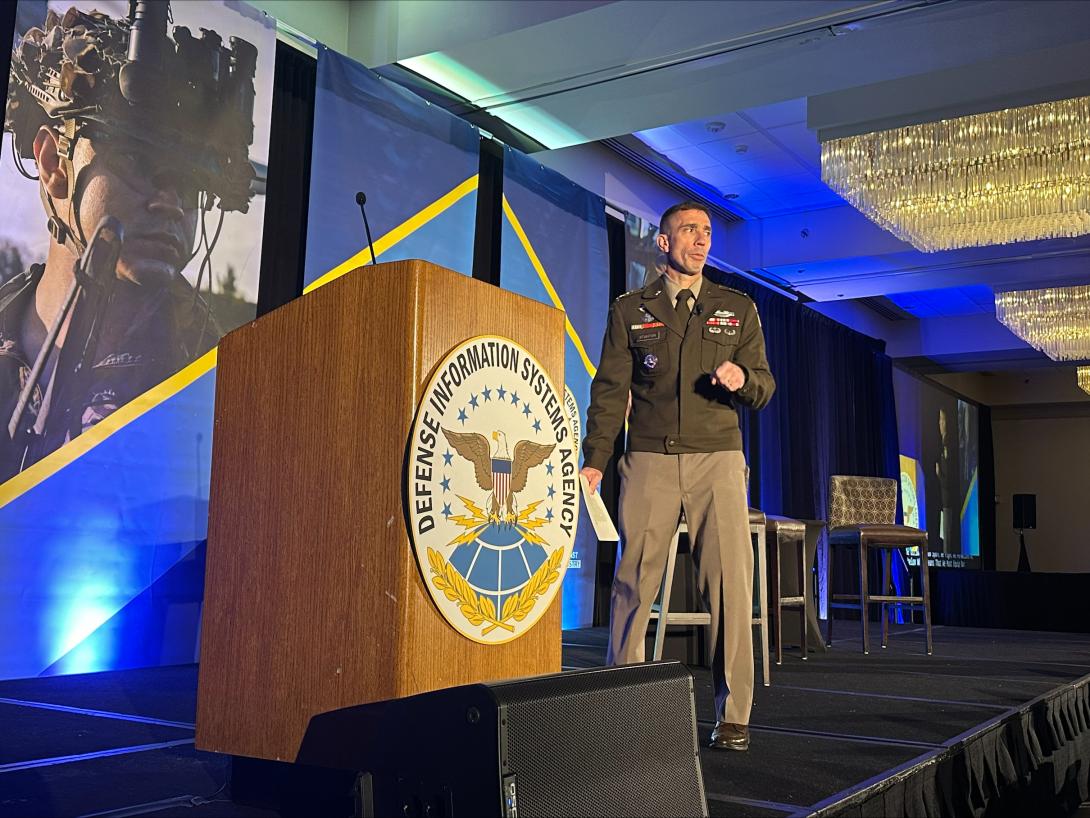DISA Spends $7B on Contracts, Emphasizes Data Accuracy and Readiness
Three weeks after officially stepping into his role as the director of the Defense Information Systems Agency (DISA), Lt. Gen. Paul T. Stanton spoke at DISA’s Forecast to Industry 2024 to establish the agency’s goal of delivering “the right data to the right place at the right time” to ultimately aid warfighters.
Gen. Stanton said the data goal is only achievable by partnering with industry.
DISA invested $7.1 billion in contracts during Fiscal Year 2024, which is $600 million more than the agency spent in 2023. Douglas Packard, DISA’s procurement services executive, shared that the investment resulted in more than 8,500 awards and 47,072 actions, and it supported all of the military services, 26 defense agencies and field activities, 10 combatant commands, and civilian agencies.
“We fight wars as a joint force with partners. That makes it hard, and we never know ahead of time the problem that we're going to face,” Gen. Stanton said. “We don't know ahead of time who's going to be in the coalition that we fight alongside. We don't know the task organization and the equipment and the munitions required to meet a specific task until we're in the fight, so we have to think that way in our design.”
The Forecast to Industry event provides industry partners with information about DISA’s upcoming acquisition and procurement plans. For Fiscal Year 2025, Steve Wallace, DISA’s chief technology officer and director of Emerging Technology, shared the areas of technology where industry partners could provide capabilities.
Wallace said DISA, on the research side of things, wants to take an early look at 6G cellular and artificial intelligence (AI) risk management. Areas already in the proof-of-concept stage include AI-augmented software engineering, user experience and bot detection. Wallace said improving user experience through service desks is key to getting data to its destination on time.
“A decision maker isn't able to make an appropriate decision if their system is down and they've got a blue screen of death sitting in front of them,” Wallace said. “How do we limit the amount of downtime that users experience, the amount of friction that they experience with their IT systems so that we can deliver them the data as quickly as possible and allow them to make and communicate those decisions in return?”
DISA’s Hosting and Compute Center will pilot hybrid cloud management via the distributed hybrid multi cloud, which Wallace said will be the basis of change for the hybrid cloud. For deployment in Fiscal Year 2025, concierge AI will be used internally to sort data on DISA’s policies.
DISA Next Strategy is the other main priority for the agency from now until 2030. Col. Ellis Z. Gordon from the Operations, Plans and Exercises Directorate at DISA highlighted four imperatives of the strategy: operate and secure Department of Defense Information Network Areas of Operation DISA; support strategic command, control and communications; optimize the network; and operationalize data. He said the path to achieving the strategy’s goals is achievable, and it will be imperative to assess the strategy during the period of high risk.

DISA program executive officers (PEOs) then revealed the several contracts they’re looking to award in the next fiscal year. Brian Hermann, DISA’s Cybersecurity and Analytics director, emphasized the need for modernized perimeter defense with cybersecurity and how he’s looking for a Swiss Army knife capability for endpoint security functions. The PEOs shared acquisitions available from PEO Services, PEO Spectrum, PEO Transport and Hosting and Compute.
Aside from the specialized technologies and capabilities that DISA is looking for, Gen. Stanton provided three general design criteria for industry partners.
Gen. Stanton said DISA will be in a state of “continuous modernization,” aiming to adapt to change faster than U.S. adversaries. The DISA director also said he’s looking for “simplicity and intuitiveness” because today’s warfighters grew up in the digital age, and complexity would only slow them down. Lastly, Gen. Stanton said people matter, meaning that he expects all individuals working with DISA to be brilliant at the basics and determined to never give up.
“When you contract with us, you are on our team, sitting alongside us, working directly with us in labs, communicating in the middle of the night on phone calls when the system has to come back up or we have to be troubleshooting,” Gen. Stanton said. “You're on our team. And culturally, we need you standing shoulder to shoulder with us so that we deliver unparalleled capabilities to our warfighting community.”
View the DISA 2025 Contract Guide in the SIGNAL Media Library.





Comments